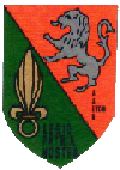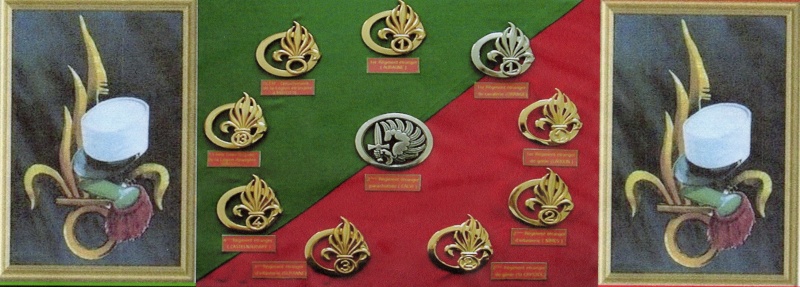By on February 5, 2015 in
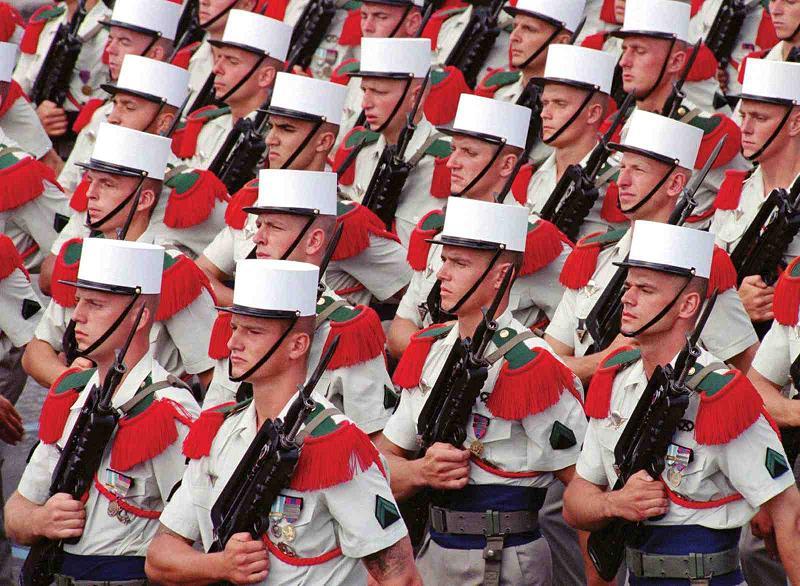
Source: Gallery Hip
No matter how carefully you plan out your life, sooner or later it’s all going to fall apart on you. When that happens, and the divorce papers show up or the parking fines get to be too much to bear, you might find yourself tempted to throw it all away and run off to join the Foreign Legion or something. Thanks to Beau Geste and that one Laurel and Hardy movie, Americans all have the idea that the Légion étrangère is the kind of organization that will let you sign up and get a new start on life by traveling all over the world and doing a romantic, dangerous job that really impresses women in sleazy North African bars.
Of course, like every other cool thing in the world, it can’t really be like that. Despite its reputation as a life preserver for the cast-away men of the world’s societies, where you can enlist to escape your horrible life and rise through the ranks in a new community, there’s got to be some kind of horrible catch. These days, they probably require a master’s degree or something, right? No way are they going to let a high school dropout who doesn’t even speak French just sign up and start firing a machine gun, right?

At first, this man was single-bugle proud of joining the Legion. But that somehow didn’t seem like enough, so he got a second one. After five more years, he’ll be given a third. Source: Wikipedia
Actually, that’s about the shape of it. Pretty much any failure under age 40 can get in, and they’re really forgiving about most of the awful things you’ve done to wreck the life you’re living now.
The Beginning
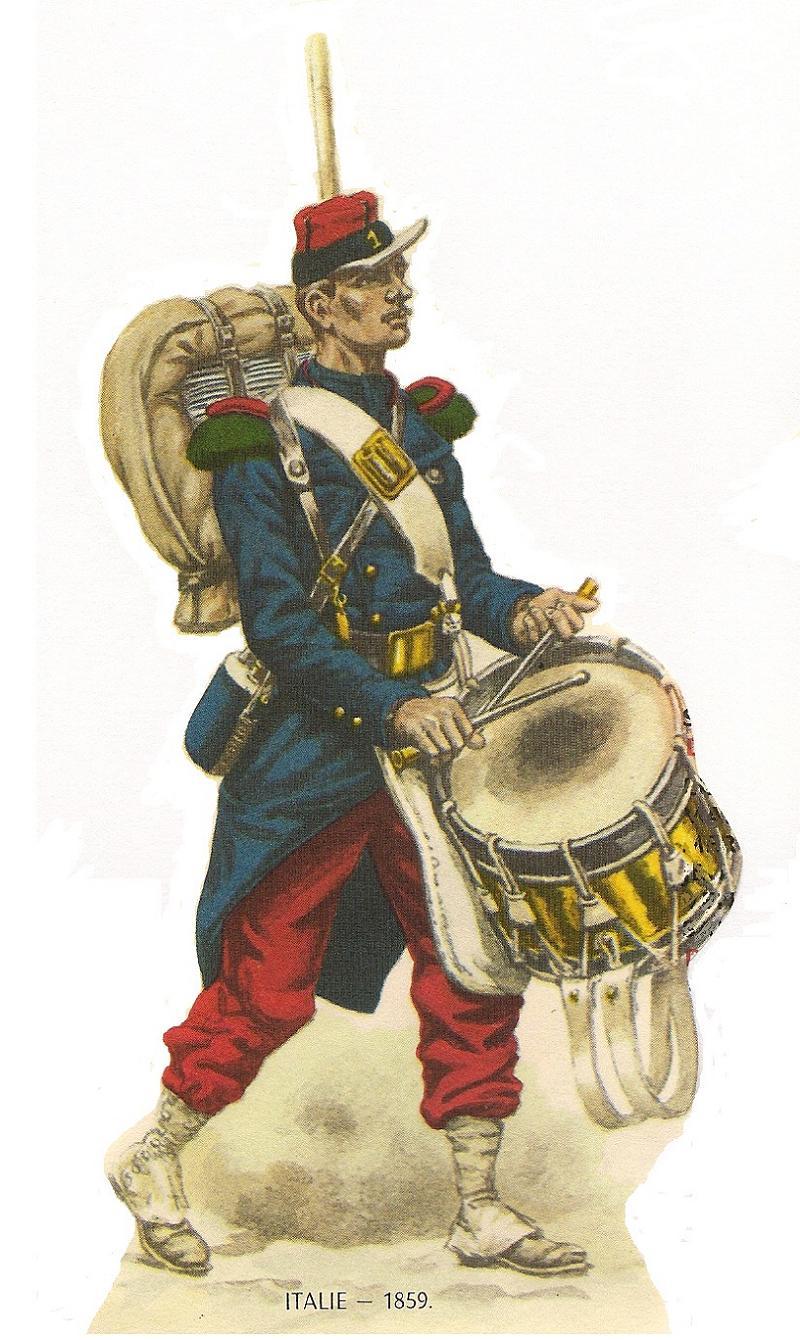
Source: Mon Legionnaire
The French Foreign Legion was conceived specifically as a dumping ground for every worthless dog who made a mess on Europe’s carpet during the wave of (mostly failed) revolutions of 1830. By 1831, most of the monarchs in Europe, having figured out that it’s dangerous to have huge masses of unemployed twenty-something men roaming around in their capital cities, were cleaning house and shoveling worn-out revolutionaries into the colonies, dungeons, and conveniently located gallows from Portugal to Russia.
At the same time, the general collapse of the Bourbon family outside of France had, ahem, liberated tens of thousands of professional mercenaries whose only skill was killing people for money. If you were the king of France just then, you’d be sitting on top of some scary people and eager for a pressure valve. Coincidentally, this was about the time Africa was being pried open by European imperialists.
For France, the conquest of Africa was largely a game of grabbing every inch the British hadn’t already claimed, which called for huge armies of men whose inevitable deaths from malaria wouldn’t be too big a deal for the (still pissed off) folks back home. The Foreign Legion used one problem to solve another, buying the French monarchy a solid 18 years of peace before being overthrown again.
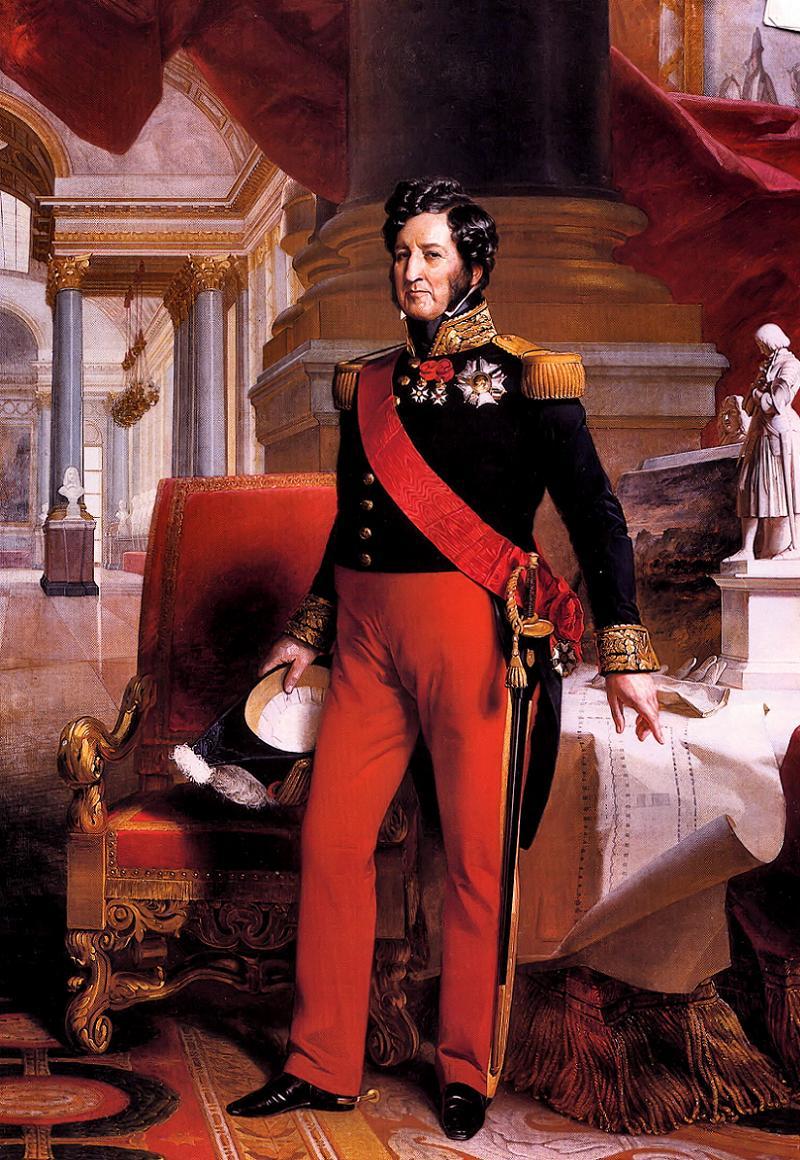
“Alors! ‘ow can you revolt against zees pantalons? Zey are red, like ze blood of the patriots!” Source: Wikipedia
King Louis Philippe put the Legion together and started recruiting from among all the overcrowded slums in Europe. The deal for new recruits was simple: join up and fight. You’ll probably die, but assuming you don’t, you can petition for French citizenship after five years or after being wounded badly enough that even a 19th-century army can’t use you. The Foreign Legion was not to be used on French soil, knowing French was not required for recruits, and members could even sign up under a pseudonym if they felt like it. Except for the bit about the false name, that’s pretty much how the Legion still operates.
History
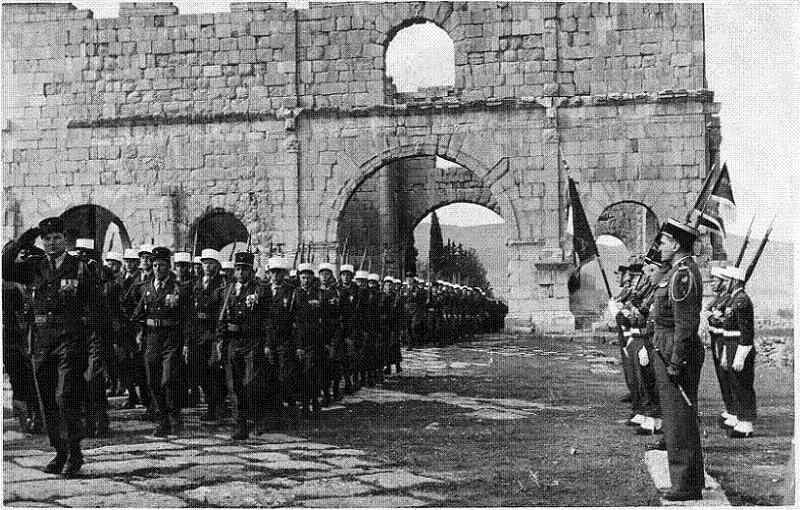
Source: Wikipedia
The Foreign Legion got to work right away in Algeria. The French expeditionary force of 1830 had been slaughtered by native Algerians who—sacre bleu!—didn’t see the French civilizing mission in quite the rosy terms it was being sold under.
Using a great deal of slaughter, and occasionally a few tactics, the Foreign Legion plugged the manpower gap and forced the French zone of control south into the Sahara. During the very few breaks in fighting, the Legion proved to be a nice, reliable slave labor force for imperial administrators who used legionnaires to drain the marshes around Algiers, which must have been a fun project to work on in the heat of the African sun.
By 1835, France was finding all sorts of fun new wars to get involved in. Right next door in Spain, for example, a struggle broke out over succession to the throne. Louis Philippe, having learned nothing from France’s last war of Spanish succession, threw in the Legion with both fists flying. They actually won this time and were probably surprised when the Legion was dissolved in 1838. The problem seems to have been casualties; by 1838, the Foreign Legion had only around 500 surviving members. Eventually, the Legion would be restored, ironically with a large contingent of former Carlist Spanish veterans who found themselves at loose ends when the war ended.
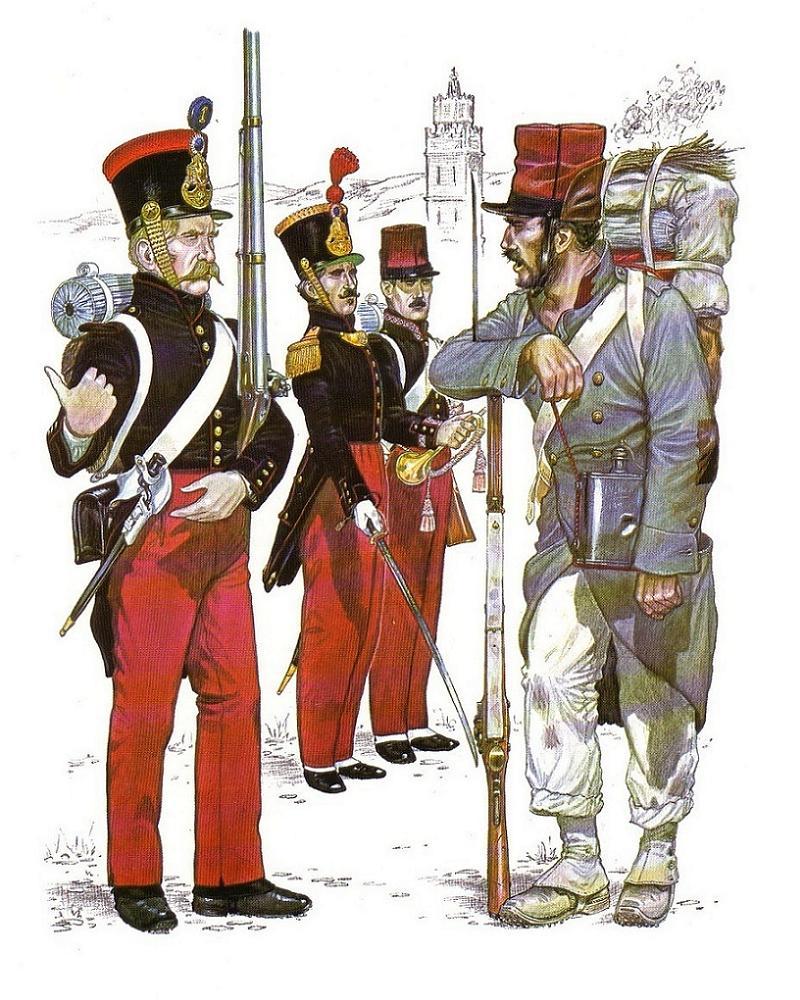
“Thees is not the mustache you are looking for, seńor.” Source: Mon Legionnaire
Throughout the 1840s, France found itself distressingly short on wars to fight, so it was a huge relief when war broke out in the Crimea in 1853. An entire brigade of the Legion was dispatched to fight Russia on its home turf, evidently not having read about how that turned out for the last French army to try that very thing, and—again surprisingly—did okay.
Between Russian bullets and a cholera epidemic, the Foreign Legion managed to keep its casualties down to a nice, round 10 percent and returned in fighting trim for the next huge war you’ve never heard of, the Second War of Italian Independence (the one where the fighting was so gory, it led to the founding of the Red Cross).
The history of the Legion’s deployments under Napoleon III and the subsequent Third Republic is worthy of a master’s thesis, which isn’t what you’re going to get here. To get a sense of what it was like to be a Foreign Legionnaire between 1853 and 1914, try climbing onto a roof somewhere. Get some multilingual friends to gather below and shout abuse at you in English, Arabic, Spanish, and German; then pitch yourself off the roof headfirst while your friends try to stab you with bayonets. For extra realism, let some yellow fever-infected mosquitoes bite you a few days before you jump.
As a Legionnaire, your life was considered totally expendable, even by the standards of European armies of the time, and French foreign policy ensured you’d get plenty of chances to expend it during your five-year hitch.
The Golden Age
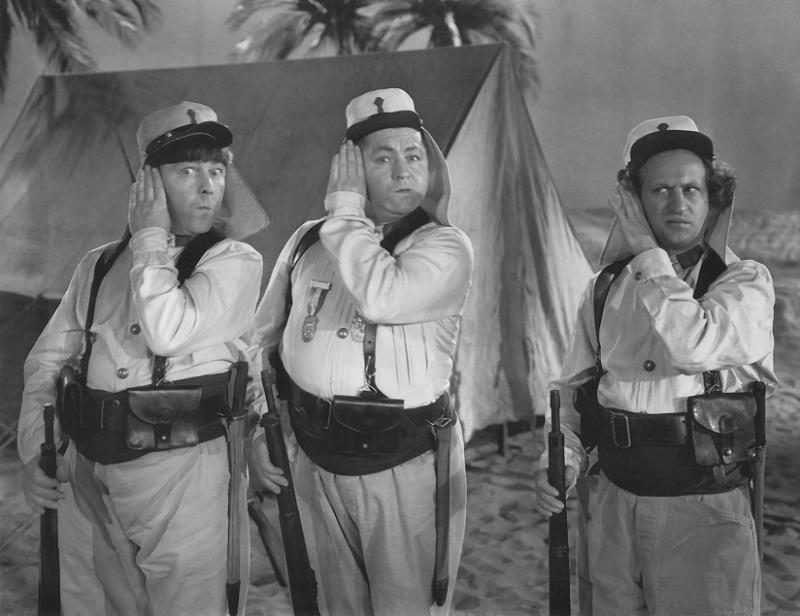
Source: Watch Lords
Most of what you’re picturing for the Foreign Legion dates to the period between World War I and Dien Bien Phu. This was the period when the Legion was at its peak enlistment, various bits of the French Empire were falling apart or coming together, and floods of refugees went looking for a fresh start overseas.
Almost 43,000 men fought with the Foreign Legion during World War I, and around 70 percent of them were either killed or wounded. For comparison, convicts who’ve been sentenced to death in Texas have an annual mortality of around 10 percent. Service in the Legion was thus seven times more dangerous than the death row in Huntsville. After the war, Europe was left largely bankrupt and in turmoil, as revolutions again gripped the continent and economic dislocations sent whole nations into hyperinflationary spirals that wiped out their middle classes (a.k.a. the history majors who knew how to overthrow governments).
World War II landed on France like a sandbag to the head. With the collapse of the Third Republic, France was split between a government-in-exile in England and a collaborationist government in Vichy. The Legion was likewise split between loyal and “loyal” factions. Units of the Legion even fought against each other for a time in North Africa until the Vichy morons came to their senses and realized what they were doing (to be fair, the German defeat at Stalingrad probably helped clarify things a little bit).
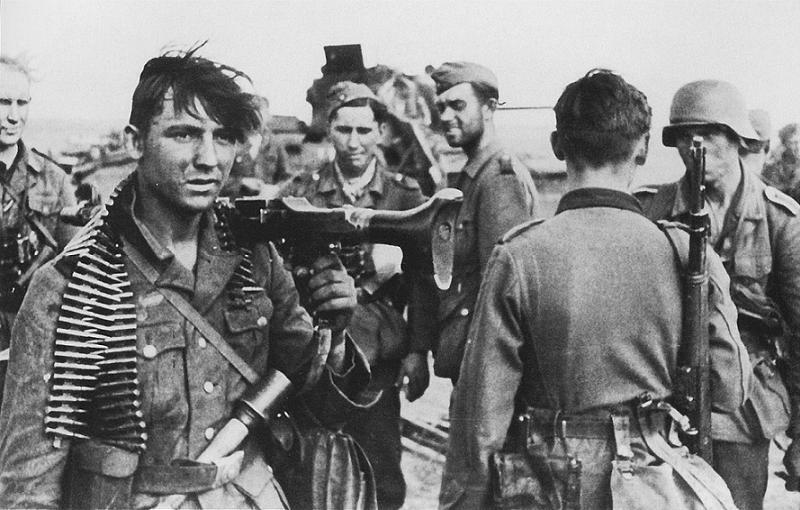
“Hey, guys? This kind of sucks.” Source: Today
After the war, an unsurprisingly large number of Germans with military backgrounds (nothing to see there! Why not stop asking nosy questions?) found a fresh start in the Legion. Contrary to rumors that circulated at the time, the Legion wasn’t actively recruiting ex-SS men, and in fact it refused admittance to anyone with the customary Waffen-SS blood group tattoo. Despite the ban, plenty of Germans had seen their lives ruined by the war, or lost their homes to the Soviet occupation, and managed to get past the recruiting officers. By 1950, the Legion was nearly 60 percent German, which probably made things awkward for the Polish, Russian, and Jewish recruits who were also at loose ends.

“Seriously, ve shot zem all. Zey vere all running around and . . . hang on, I’ll tell you later ven Ivanov goes to ze bathroom.” Source: Blogspot
The Foreign Legion’s main job throughout the 1950s and ’60s was to lose wars. That wasn’t really the Legion’s fault, as it could only do what its leaders said to do and there wasn’t an infantry force on Earth that was a match for the Viet Minh. Whole units were slaughtered wholesale in Indochina, between 1945 and 1954, which segued really nicely into the mass slaughters in Algeria between 1954 and 1962.
After the fall of the empire the Legion was founded to protect, the force became a kind of international pest control agency. From time to time, as former French colonies found themselves with domestic insurrections from communists, Islamists, or—worst of all—Islamic communists, the Legion would be deployed to do a quick sweep through the disputed zones and kill off enough insurgents (and people who would totally have been insurgents if they’d lived to adulthood) to stabilize friendly governments across North Africa. It’s a job they’re still at, with the last major deployment being in Mali in 2013-14.
Service Guarantees Citizenship! Would You Like to Know More?

Source: Roberts Space Industries
Okay, so you’re sold on the job, and you can’t wait to get started fighting your way across Africa in the summer. How does one go about joining up? According to ForeignLegion.info, first you have to travel (at your own expense) to France. The Legion has about half a dozen recruiting stations across the country, and it’s almost as simple as walking up and knocking on their door.
Recruits must be between the ages of 17 and 40, physically fit, and not currently wanted by Interpol (for anything serious, at least). The Legion has rules against facial tattoos, as is the case with all the best employers, and there’s no way you’re getting in with that swastika tattoo on your neck—so bring a scarf. Aside from that, the Legion is basically willing to scrape you off the streets of Paris, hand you a uniform, set you up with temporary housing until your training class starts, and then march you into the desert to die.
Your job is probably pretty cool, too, though.








































